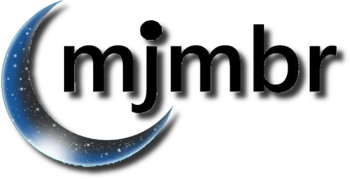Species-Level Differentiation of Microbes within Multispecies Microscopic Polyculture via Complex Deep Learning Strategies
Keywords:
Species-Level Differentiation, Microbes, Multispecies Polyculture, Microscopic Analysis, Deep Learning, Microbial Community, Artificial IntelligenceAbstract
The study aims to investigate the differentiation of microbes at the species level within multispecies microscopic polycultures using advanced deep-learning techniques. Utilizing advanced deep learning models such as Convolutional Neural Networks (CNNs) and Recurrent Neural Networks (RNNs), this approach focuses on training with extensive datasets of microscopic images to improve the accuracy of microbial identification, spatial mapping, and analysis of temporal dynamics. Fundamental discoveries encompass enhanced precision in microbial identification, unraveling microbial communities' spatial and temporal dynamics, and creating models to forecast microbial responses. Emphasizing the importance of ongoing investment in computational infrastructure, data-sharing initiatives, and interdisciplinary collaboration is crucial for responsibly advancing microbial community analysis. This study emphasizes the significant impact that deep learning technologies can have on understanding microbial ecosystems, solving environmental issues, and driving innovation in biotechnology and medical research.
Downloads
References
Achtman, M., Wagner, M. (2008). Microbial Diversity and the Genetic Nature of Microbial Species. Nature Reviews. Microbiology, 6(6), 431-40. https://doi.org/10.1038/nrmicro1872
Anumandla, S. K. R., & Tejani, J. G. (2023). Robotic Automation in Rubber Processing: Improving Safety and Productivity. Asian Journal of Applied Science and Engineering, 12(1), 7–15. https://doi.org/10.18034/ajase.v12i1.90
Duckney, P., Wong, H. K., Serrano, J., Yaradou, D., Oddos, T. (2013). The Role of the Skin Barrier in Modulating the Effects of Common Skin Microbial Species on the Inflammation, Differentiation and Proliferation Status of Epidermal Keratinocytes. BMC Research Notes, 6, 474. https://doi.org/10.1186/1756-0500-6-474
Gomila, M., Prince-Manzano, C., Svensson-Stadler, L., Busquets, A., Erhard, M. (2014). Genotypic and Phenotypic Applications for the Differentiation and Species-Level Identification of Achromobacter for Clinical Diagnoses. PLoS One, 9(12), e114356. https://doi.org/10.1371/journal.pone.0114356
Guden, R. M., Vafeiadou, A-M., Meester, N. D., Derycke, S., Moens, T. (2018). Living Apart-together: Microhabitat Differentiation of Cryptic Nematode Species in a Saltmarsh Habitat. PLoS One, 13(9), e0204750. https://doi.org/10.1371/journal.pone.0204750
Gunina, A., Smith, A. R., Godbold, D. L., Jones, D. L., Kuzyakov, Y. (2017). Response of Soil Microbial Community to Afforestation with Pure and Mixed Species. Plant and Soil, 412(1-2), 357-368. https://doi.org/10.1007/s11104-016-3073-0
Huang, C-h., Lee, F-l. (2010). Differentiation of Sourdough Yeast Species by A Novel Species-specific PCR Assay. World Journal of Microbiology and Biotechnology, 26(6), 1087-1092. https://doi.org/10.1007/s11274-009-0274-1
Kothapalli, K. R. V., Tejani, J. G., Rajani Pydipalli, R. (2021). Artificial Intelligence for Microbial Rubber Modification: Bridging IT and Biotechnology. Journal of Fareast International University, 4(1), 7-16.
Lange, M., Habekost, M., Eisenhauer, N., Roscher, C., Bessler, H. (2014). Biotic and Abiotic Properties Mediating Plant Diversity Effects on Soil Microbial Communities in an Experimental Grassland. PLoS One, 9(5), e96182. https://doi.org/10.1371/journal.pone.0096182
Michelon, W., Da Silva, M. L., Busi., Mezzari, M. P., Pirolli, M., Prandini, J. M. (2016). Effects of Nitrogen and Phosphorus on Biochemical Composition of Microalgae Polyculture Harvested from Phycoremediation of Piggery Wastewater Digestate. Applied Biochemistry and Biotechnology, 178(7), 1407-1419. https://doi.org/10.1007/s12010-015-1955-x
Mohammed, M. A., Mohammed, R., Pasam, P., & Addimulam, S. (2018). Robot-Assisted Quality Control in the United States Rubber Industry: Challenges and Opportunities. ABC Journal of Advanced Research, 7(2), 151-162. https://doi.org/10.18034/abcjar.v7i2.755
Morrow, J. L., Frommer, M., Shearman, D. C. A., Riegler, M. (2015). The Microbiome of Field-Caught and Laboratory-Adapted Australian Tephritid Fruit Fly Species with Different Host Plant Use and Specialisation. Microbial Ecology, 70(2), 498-508. https://doi.org/10.1007/s00248-015-0571-1
Morton, J. T., Sanders, J., Quinn, R. A., McDonald, D., Gonzalez, A. (2017). Balance Trees Reveal Microbial Niche Differentiation. Msystems, 2(1). https://doi.org/10.1128/mSystems.00162-16
Pydipalli, R., & Tejani, J. G. (2019). A Comparative Study of Rubber Polymerization Methods: Vulcanization vs. Thermoplastic Processing. Technology & Management Review, 4, 36-48. https://upright.pub/index.php/tmr/article/view/132
Roberts, C., Pydipalli, R., Tejani, J. G., & Nizamuddin, M. (2021). Green Chemistry Approaches to Vulcanization: Reducing Environmental Impact in Rubber Manufacturing. Asia Pacific Journal of Energy and Environment, 8(2), 67-76. https://doi.org/10.18034/apjee.v8i2.750
Rodriguez, M., Tejani, J. G., Pydipalli, R., & Patel, B. (2018). Bioinformatics Algorithms for Molecular Docking: IT and Chemistry Synergy. Asia Pacific Journal of Energy and Environment, 5(2), 113-122. https://doi.org/10.18034/apjee.v5i2.742
Sandu, A. K., Pydipalli, R., Tejani, J. G., Maddula, S. S., & Rodriguez, M. (2022). Cloud-Based Genomic Data Analysis: IT-enabled Solutions for Biotechnology Advancements. Engineering International, 10(2), 103–116. https://doi.org/10.18034/ei.v10i2.712
Sassenhagen, I., Gao, Y., Lozano-Duque, Y., Parsons, M. L., Smith, T. B. (2018). Comparison of Spatial and Temporal Genetic Differentiation in a Harmful Dinoflagellate Species Emphasizes Impact of Local Processes. Frontiers in Marine Science. https://doi.org/10.3389/fmars.2018.00393
Suryanti, I. A. P., Widiyanti, N. L. P. M., Tangguda, S., Tridewi, I. A. K. (2018). Identification of Microscopic Fungus in Gill of Skipjact Tuna (Katsuwonus pelamis L.) at Traditional Markets in Singaraja – Bali. Journal of Physics: Conference Series, 1040(1). https://doi.org/10.1088/1742-6596/1040/1/012002
Tejani, J. G. (2017). Thermoplastic Elastomers: Emerging Trends and Applications in Rubber Manufacturing. Global Disclosure of Economics and Business, 6(2), 133-144. https://doi.org/10.18034/gdeb.v6i2.737
Tejani, J. G. (2019). Innovative Approaches to Recycling Rubber Waste in the United States. ABC Research Alert, 7(3), 181–192. https://doi.org/10.18034/ra.v7i3.660
Tejani, J. G. (2020). Advancements in Sustainable Rubber Production: Bio-Based Alternatives and Recycling Technologies. ABC Journal of Advanced Research, 9(2), 141-152. https://doi.org/10.18034/abcjar.v9i2.749
Tejani, J. G. (2023). The Influence of Crosslinking Agents on the Properties of Thermoplastic Elastomers. Silicon Valley Tech Review, 2(1), 1-12.
Tejani, J. G. (2024). Robotics and Automation in Rubber Vulcanization Processes. Robotics Xplore: USA Automation Digest, 1(1), 44-60.
Tejani, J. G., Khair, M. A., & Koehler, S. (2021). Emerging Trends in Rubber Additives for Enhanced Performance and Sustainability. Digitalization & Sustainability Review, 1(1), 57-70. https://upright.pub/index.php/dsr/article/view/130
Tejani, J., Shah, R., Vaghela, H., Kukadiya, T., Pathan, A. A. (2018). Conditional Optimization of Displacement Synthesis for Pioneered ZnS Nanostructures. Journal of Nanotechnology & Advanced Materials, 6(1), 1-7. https://www.naturalspublishing.com/Article.asp?ArtcID=13193
Vennapusa, S. C. R., Pydipalli, R., Anumandla, S. K. R., Pasam, P. (2022). Innovative Chemistry in Rubber Recycling: Transforming Waste into High-Value Products. Digitalization & Sustainability Review, 2(1), 30-42.
Vennapusa, S. C. R., Tejani, J. G., Mohammed, M. A., Yarlagadda, V. K. (2024). Automated Robotics Solutions for Precision Molding in Rubber Manufacturing. NEXG AI Review of America, 5(1), 1-18.
Ying, D., Pasam, P., Addimulam, S., & Natakam, V. M. (2022). The Role of Polymer Blends in Enhancing the Properties of Recycled Rubber. ABC Journal of Advanced Research, 11(2), 115-126. https://doi.org/10.18034/abcjar.v11i2.757
Downloads
Published
Issue
Section
License
Copyright (c) 2024 Malaysian Journal of Medical and Biological Research

This work is licensed under a Creative Commons Attribution-NonCommercial 4.0 International License.










